Trip Overview
A Trekker’s Paradise: Unraveling the Mystique of Gokyo Lake Trek in Nepal
Gokyo Lake Trek takes you through the beautiful and scenic landscapes of the Himalayas and offers stunning views of some of the world’s highest peaks, including Mount Everest, Lhotse, Makalu, and Cho Oyu. The trek starts from the town of Lukla and takes you through several small villages, including Namche Bazaar, which is a popular resting spot for trekkers. From there, you will continue on to Gokyo Valley, which is known for its beautiful glacial lakes. Along the way, you will also pass through the Khumbu Glacier, one of the largest glaciers in the world. This Lake Trek is a stunning journey that takes you through the heart of the Himalayas and offers breathtaking views of some of the world’s highest peaks.
The highlight of the trek is undoubtedly the Gokyo Ri summit, which offers panoramic views of the surrounding Himalayan peaks and the beautiful Gokyo lakes. The trek is considered to be moderate to difficult, and trekkers are advised to be in good physical condition before attempting it. The best time to do the Everest Gokyo Lake Trek is from March to May and from September to November when the weather is generally clear and dry. However, it is important to note that the weather in the mountains can be unpredictable, and trekkers should always be prepared for sudden changes in weather conditions.
Highlights of the Trek – Gokyo Ri, Ngozumpa Glacier, and Gokyo Lakes
The Gokyo Lake Trek is full of breathtaking views and natural wonders. Here are some of the highlights of the trek:
- Gokyo Ri: The trek to the summit of Gokyo Ri (5,357 meters) is one of the highlights of the trek. The summit offers stunning views of the Himalayan peaks, including Mt. Everest, Lhotse, and Makalu.
- Ngozumpa Glacier: The trek takes you through the Ngozumpa Glacier, the largest glacier in the Himalayas. The glacier is a stunning sight, and you’ll be able to see icefalls, crevasses, and seracs along the way.
- Gokyo Lakes: The trek takes you through a series of serene turquoise lakes, known as the Gokyo Lakes. The lakes are a sight to behold, and the reflections of the surrounding peaks on the lakes are mesmerizing.
Preparing for the Trek – Physical and Mental Fitness
The Gokyo Lake Trek is a physically demanding trek and requires a good level of fitness. You should start preparing for the trek at least 6-8 weeks in advance. This will give you enough time to build up your stamina and endurance. Cardiovascular exercises like running, cycling, and swimming are great for building endurance. You should also include strength training exercises like squats, lunges, and push-ups to build your leg and core strength.
Mental fitness is equally important for a successful trek. The trek can be mentally challenging, especially when you’re dealing with altitude sickness. You should be prepared to spend long hours walking and to sleep in basic teahouses. It’s important to stay positive and keep yourself motivated throughout the trek. A positive attitude can go a long way in helping you overcome the challenges of the trek.
Understanding Altitude Sickness and its Prevention
Altitude sickness, also known as acute mountain sickness (AMS), is a common problem for trekkers in the Himalayas. It occurs when you ascend to high altitudes too quickly, and your body doesn’t have enough time to acclimatize. Symptoms of AMS include headache, dizziness, nausea, and shortness of breath. In severe cases, it can be life-threatening.
The best way to prevent altitude sickness is to ascend slowly and give your body enough time to acclimatize. The itinerary for the Gokyo Lake Trek is designed to minimize the risk of AMS. We have included rest days at higher altitudes to help your body acclimatize. You should also drink plenty of water and avoid alcohol and smoking.
Cultural and Religious Significance of the Trek
The Gokyo Lake Trek is not just a trek through stunning landscapes; it’s also a journey through the rich culture and religion of the Sherpa people. The Sherpa people are a Tibetan ethnic group who have lived in the Khumbu region for centuries. They are known for their hospitality and their skills as mountaineers.
The trek takes you through several Sherpa villages, where you can experience their way of life and learn about their culture. You’ll also be able to visit several monasteries along the way, including the Tengboche Monastery, one of the oldest and most important monasteries in the region.
Details Itinerary
Day 01: Arrive in Kathmandu Valley
Upon your arrival at Kathmandu airport, you will be met by our representative who will transfer you to your hotel. You will have the rest of the day to explore the city or rest.
Day 02: Fly towards Lukla and walk to Phakding (2651m / 3 to 4hrs)
Early in the morning, we will take a scenic flight to Lukla, the gateway to the Everest region. From here, we will start our trek and descend to the village of Phakding, located on the banks of the Dudh Koshi River.
Day 03: Walk to Namche Bazaar (3438m / 5 to 6hrs)
We continue our trek along the Dudh Koshi River, crossing suspension bridges and passing through several small villages. After a challenging climb, we will reach Namche Bazaar, a bustling town in the heart of the Everest region.
Day 04: Rest Day in Namche Bazaar
To acclimatize to the altitude, we will spend a day in Namche Bazaar. On this day, we also get a chance to explore the beautiful Sherpa villages. And on this day, we will hike up Everest Viewpoint and after hiking up Everest Viewpoint, and back to the hotel and take some rest.
Day 05: Walk to Dole (4000m / 5 to 6hrs)
The trail starts with a steep ascent out of Namche Bazaar, passing through the small village of Sanasa before reaching Mong La Pass. From here, the trail descends gradually to Phortse Thanga before climbing again to reach Dole. Along the way, the trail offers stunning views of the Himalayan Mountains and passes through traditional Sherpa villages.
Day 06: Walk to Mechhermo (4470m / 4 to 5hrs)
To start your trek, you need to head towards the north from Dole village, following the signs for Mechhermo. The trail initially takes you uphill, passing through rhododendron forests and alpine meadows. You will also cross a few small streams and bridges along the way. As you gain altitude, the views of the surrounding mountains become more and more spectacular. You will be able to see peaks such as Ama Dablam, Cho Oyu, and Everest in the distance.
Day 07: Walk to Gokyo (4800m / 4 to 5hrs)
The trek from Machhermo to Gokyo is around 4 to 5 hours of walking. The trail goes uphill through the rhododendron forests and passes by the Dudh Koshi River. You will also come across several small Sherpa villages along the way. The trail then follows the Gokyo Lake, and after a short climb, you will reach the beautiful Gokyo village.
Day 08: Rest Day in Gokyo Valley
Gokyo Village is a charming traditional Sherpa settlement, located on the shores of the third lake. You can explore the village, interact with the locals, and learn about their culture and way of life. On this day, we will climb up Gokyo Ri a popular viewpoint that offers stunning panoramic views of the Himalayas, including Mt. Everest, Lhotse, Makalu, and Cho Oyu. It’s a steep climb, but the views from the top are worth the effort.
Day 09: Hike up Gokyo Ri and back to Mechhermo (4470m)
Very early in the morning, we will hike up to the Gokyo Ri. The hike up Gokyo Ri can be challenging due to the high altitude and steep incline. From the top of Gokyo Ri, the trail offers stunning panoramic views of the surrounding Himalayan mountains, including Mount Everest, Lhotse, Makalu, and Cho Oyu. After hiking up Gokyo Ri, we will back to Mechhermo and going to spend the overnight.
Day 10: Walk to Namche Bazaar (3438m / 5 to 6hrs)
Start your trek early in the morning and follow the trail along the river. The trail gradually ascends towards Tengboche, passing through forests of rhododendron and pine. Afterward, continue on the trail towards Namche Bazaar. The trail descends steeply to the river before ascending again to Namche Bazaar. You will pass through several small villages and will have more breathtaking views of the surrounding mountains.
Day 11: Walk to Lukla (2800m / 5 to 6hrs)
To start the trek, you’ll need to leave Namche Bazaar and head towards the town of Monjo. From Monjo, the trail continues to Phakding, a small village located about 2-3 hours from Namche Bazaar. You’ll cross more suspension bridges and pass through small settlements along the way. Once you reach Phakding, you’ll have the option to stop for lunch or continue on to Lukla. The trail gradually ascends and passes through several small villages. The trail becomes steeper and you’ll begin to climb up towards Lukla.
Day 12: Fly back to Kathmandu Valley
To fly from Lukla to Kathmandu, you can take a domestic flight from Tenzing-Hillary Airport in Lukla to Tribhuvan International Airport in Kathmandu. This flight takes around 30 minutes, and it’s a popular option for travelers who want to save time and avoid the long trek from Lukla to Kathmandu. From the Domestic airport, we will take you to Hotel. And in the evening, you can walk around Thamal Bazaar which is very beautiful at night time.
Day 13: Final Departure
This will be your last day in Nepal and on this day at the hotel lobby, there will be a guide who is with you in the trekking period. From the hotel, you will drive toward the international airport and see you take off from Nepal and also hope that you will give a chance to serve you again.
Cost Details
Cost Includes
- Airport / Hotel / Airport pick up and Drop by private car/van/bus.
- Hotel In Kathmandu: 2 Nights standard accommodation in Kathmandu with breakfast.
- Both Way Domestic Air Ticket Kathmandu to Lukla and Lukla to Kathmandu
- You’re Meal During the Trekking as Your standard meals (3 times a day Breakfast, Lunch, and Dinner Main Course).
- All Trekking Permit (Sagarmatha National Park Permit) and Local Permit.
- Accommodation in Trekking: All accommodations in lodge/tea houses during the treks.
- Trekking Guide: Government License Holder Trekking Guide An experienced, helpful, friendly, and English-speaking Trekking Guide. His well-paid salary, meals, accommodation insurance, Flight ticket, etc.
- Trekking Porter: porters (1 porter for 2 people). Salary, Food, Drinks, Accommodation, Transportation.
- After the Success Trip, Everest Trekking Routes will Provide Adventure Certificate.
- Arrangement of Emergency Helicopter service which will be paid for by your Travel insurance company.
- Medical supplies (first aid kit will be available).
- All government taxes and services are charged.
Cost Excludes
- All Meals and Extra Accommodations in Kathmandu
- personal expenses (bar bills, Ginger Lemon Honey, Pot size of hot drink, beer, coke, a bottle of water, phone call, laundry service, Helicopter rescue, Electronic device recharge such as Mobile, Camera, etc.)
- Tips for guide, porters, and driver.
Trip Map

FAQ
Cost & Date
Client Reviews
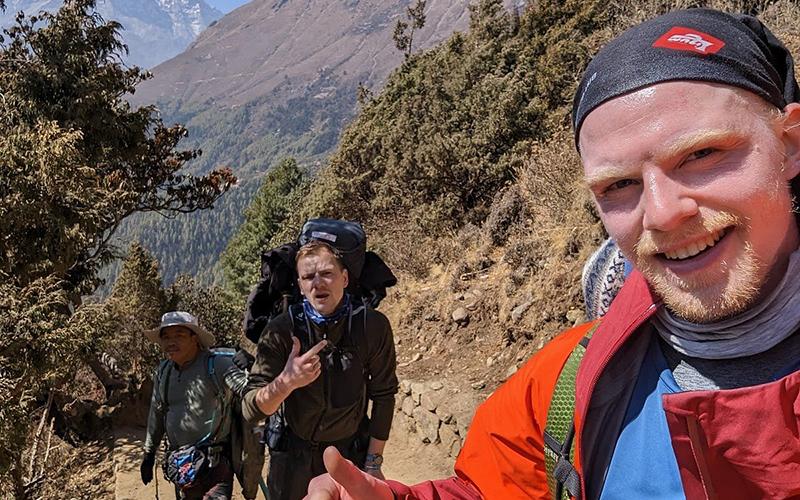
Sebastian
Deutsch
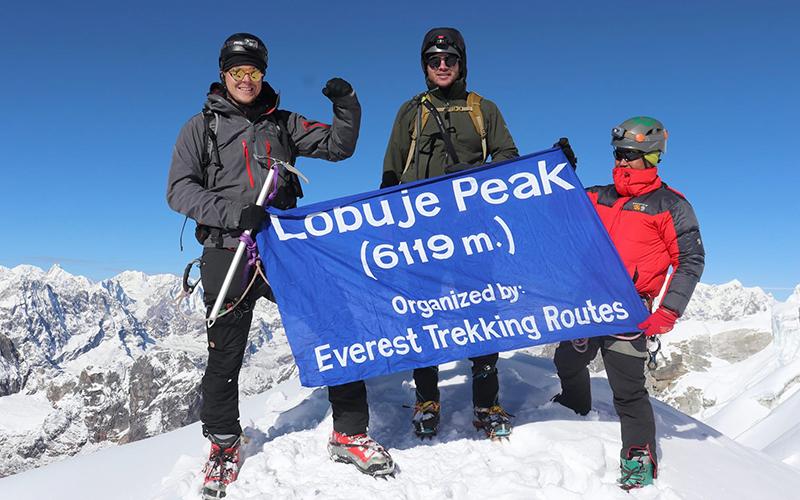
Soren Dorfhoff
Denmark
Island Peak, Everest Base Camp and Lobuche Peak Climbing (October 2022)
I have now used Everest Trekking Routes for two trips to Nepal. I can’t put my finger on anything that needs improvement. The initial communication part is spot on. They are quick to respond and I usually my questions answered on the first reply. Both times I have been greeted at the airport by a super polite guide. I’ve felt welcome and gotten all my needs tended to.
On my second trip, we could not fly to Lukla, because of bad weather. Instead of waiting for the weather to clear up, they arranged alternative transport to the mountains, to avoid wasting precious days in Kathmandu.
The whole city experience has been an absolute pleasure. Except for the hard work, summiting a mountain
Best recommendations to the guys from Everest Trekking Routes
Source: Tripadvisor


setsuna1101
Hongkong, China
EBC + Island Peak Trek
A professional guide with passion brought us going to EBC, Kala Patthar and Island Peak Summit. He can manage all the matter letting us trek with no worry. There were three days no flight from Lukla back to Kathmandu due to bad weather, but we can still on schedule. Thanks for his help and made this trip memorable. He is Rabin Gurung.


Tift Lars
Denmark
Mera Peak, Island Peak and Lobuche Peak Climbing
My brother and I had the pleasure of having Rabin as our guide on the trip to Mera Peak Expedition.
Everything was planned to perfection and we had a great time with Rabin, who is friendly, funny, and always helpful.
Last but not least, we reached the summit.
Source: TripAdvisor


Jasmin H
Germany
Gokyo Lakes with Gokyo Ri
The trekking was an extraordinary experience. Breathtaking views of Everest and the surrounding 8000s. Rabin Gurung always made sure we have a nice accommodation, enough for eating and drinking, warm and comfortable. He is a really caring guide. I would do another trip with him right away. He organised everything so that we could totally focus on the hiking.

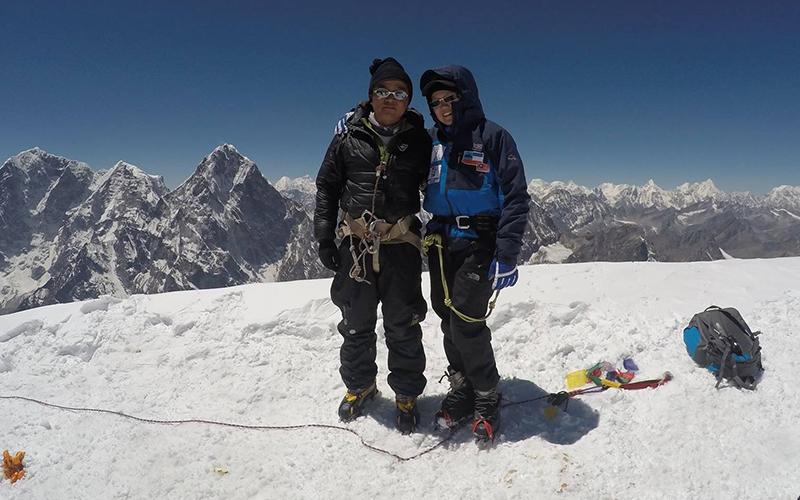
Antonia Carol Suning
Sabah, Malaysia
Everest Base Camp & Lobuche Peak with Rabin
It was such a hard fight to join this trip. Because I had to work hard to find funding for this training. It is the first summit I attended team NOBAT ( No Boundary Adventurers Association Sabah ) to the Himalayas with AMG (Adventure Mountain Guide Rabin Gurung), I gained a great experience, which Mr. Rabin Gurung was very friendly and kind as a mountain guide who experience he made this trip so enjoyable, and build a better friendship.
I would like to thank him for giving the best service to us, this is the first time I walk for 21 days hahaha. In every step, he remained faithful to accompany and not leave us, even though there are 2 people in our group who did not succeed, and he sent us back to our high camp Lobuche to support the spirit reaching the summit of Lobuche Peak Climbing.
Nice trip and good services such as tents, food, and stories you tell about your family, it is good, and I enjoyed the trip because you protected me and my team so much.
Keep up the good work you AMG! I am happy to see and to know you! Good luck! * extra bonus able to speak Bahasa Melayu! hehe

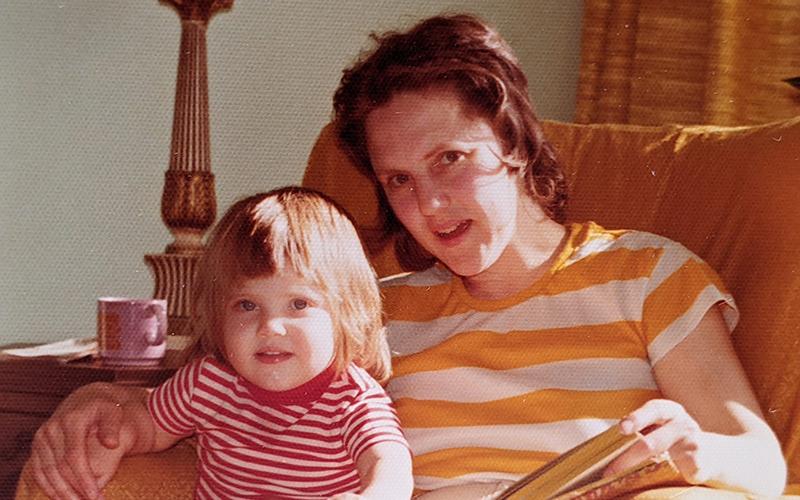
Jasen Moore & Helen Kerrandjas
Toronto, Canada
Annapurna Base Camp Trek
While Rabin is a very knowledgeable and cabable guide it was his kindness, Warm smile, and Constant eagernessto help that made our trip truly memorable. Rabin quickly earned our trust and friendship and would be an exlcellent campanion on any trek ! we would very happily Recommend Rabin to any one who is making a trip in Nepal. He is is a wonderful person, and a good friend.
Email : helen.karrandjas@maclaren.com
Details Address : 191 Millwood Rd, Upper Toronto, ON M4S 1J6 Canada

Jaistin Tamin
Sabah Malaysia
Everest Base Camp, Island Peak, Lobuche Peak & Chulu West Peak
Sewaktu saya ditugaskan oleh persatuan NOBAT untuk mendapatkan khidmat ‘trekking guide’ bagi ekspedisi NOBAT Himalaya 2013, saya telah menghubungi beberapa ‘trekking agent’ di Kathmandu melalui emel. Saya tertarik dengan laman web Rabin Gurung dan ‘testimonial’ dari beberapa individu yang penat mendapatkan khidmatnya. Rabin memberikan tawaran kos yang paling berpatutan. Dari raut wajahnya saja saya yakin dia adalah orang yang jujur dan’friendly’. Satu kelebihan lain ialah dia boleh berbahasa Malaysia.
Apabila bertemu dengan Rabin buat pertama kalinya di Kathmandu, memang sah bahawa kami telah membuat pilihan yang tepat. Sepanjang trekking, Rabin sangat professional dalam khidmatnya. Beliau flexible dan mudah diajak berunding. Kami tidak lagi menganggapnya sebagai pemandu jalan tetapi sebagai sahabat..kepada sesiapa yang ingin trekking di Himalaya, sila dapatkan khidmat Rabin. Saya percaya anda bakal membuat pilihan yang tepat.
Email: cliffhanger_08@yahoo.com

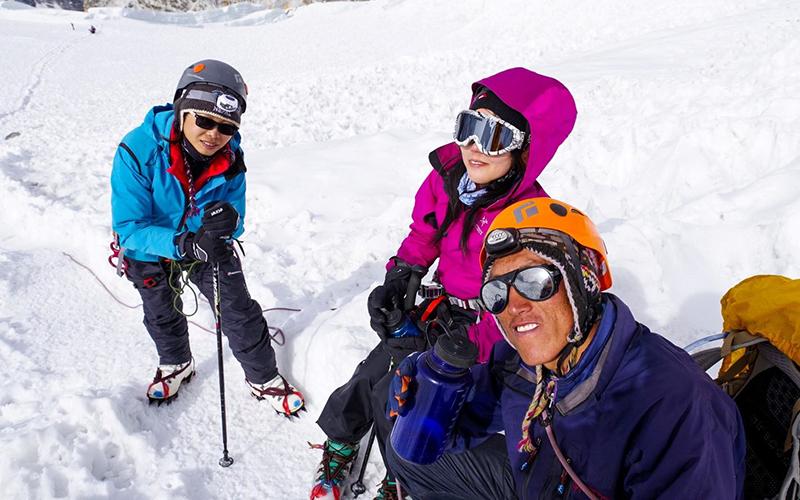
Amy Cheung
Hongkong, China
Island Peak Climbing Via Everest Base Camp
I’m so grateful that I finally finished the trekking, and this must be credit to our professional guide, Rabin! He is so nice! He cared us so much, greeted us with his big warming smile during the whole journey! Before this trekking, the highest place I had ever been was only 934 meters, I was so worried about high altitude problem. But In fact, my adaptability was pretty good, cuz Rabin’s trekking plan was so suitable for me that I finally reached EBC and Kala Pattar under the snow and strong winds! When we backed to Island Peak Base Camp after summit, he brought hot drinks and biscuits and waited for us on the way, that was so sweet and we were really really exhausted and hungry at that time, he just like an angle showed up to us!
It’s a great trekking journey and I really thanks Rabin’s guiding and accompany with us! We shared the precious moments on this journey!

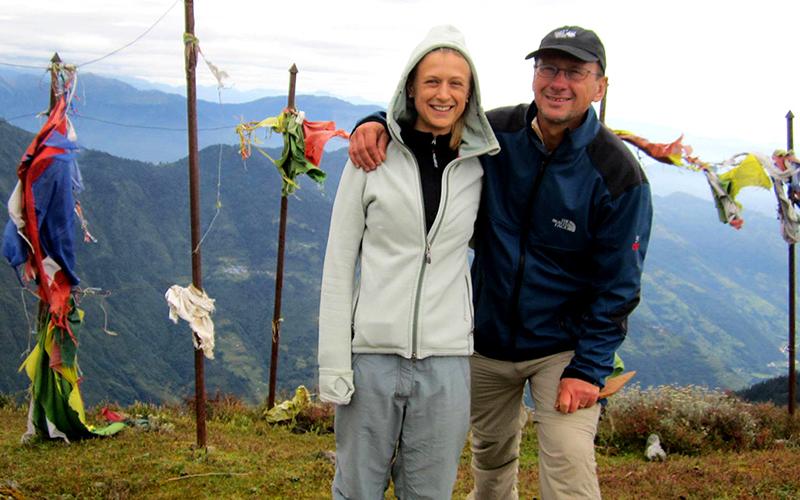
Jan Erik & Camilla Hedborg
Switzerland
Helambu Circuit Trekking in Nepal
This is the second time that we go to Nepal, and both times Rabin has been our guide while trekking. First time we did a 4 day trek in the Annapurna region and the second time a 6 day trek in the Helambu region. We enjoyed both our treks very much and are so happy to have been able to trek with Rabin on both occasions, who is not only a knowledgeable and experienced guide, but also a very nice person and good company. Both of us a re happy to recommend you contacting Rabin if you are planning a trip to Nepal – whether you are going for a short hike or longer trip that needs more planning.
Email : camilla.hedborg@hotmail.com


Jeff Tucker & Wanida Tucker
USA
Manaslu Circuit & Tsum Valley with Rabin Gurung
Recently my wife and I visited Nepal for the eighteenth time and enjoyed a wonderful trek, one of the best treks ever, and this was largely due to our guide, Rabin Gurung (Trekking Guide in Nepal), with whom we also trekked around Manaslu in 2010.
If you come to Nepal with the idea of doing ‘your own trek’ with a small party, I highly recommend hiring Rabin. Not only does he have many years of experience but he is very honest and humble, so much so that one woman at a very basic lodge on our recent trek, impressed by his honesty, told my wife that “this man is a very good man, honest man, all other guide-man say lie to customers, say them that price is higher than the real price, so they can get more money.”
Rabin is always in good humor and friendly and gets along well with the local people and the porters too. Furthermore, his varied experience from his earlier years as a porter and cook helped to make him a better guide. I can’t remember how many times during our treks, when we stopped at a new or very basic lodge, or even at a tea house for lunch, when the owner’s cooking skills were at most primitive, Rabin tactfully volunteered to move into the kitchen and some amazingly delicious food would come out, made from the most simple ingredients.
Three years ago, in March of 2010, the Manaslu trek was not what it is now. Along the entire trek from Arughat (where we had to start walking), until we reached to Annapurna circuit route, there was at that time only a single lodge with what could be called a ‘menu’, and that was the one and only lodge in Sama village at that time. All other villages either had nothing but dal bhat and perhaps chapatis, or nothing to eat and no lodge at all. We had to camp some places, but when we could, we stayed in the simple lodges that existed and he often improved our diet by cooking foods that the proprietor did not know how to cook, sometimes even such a basic menu item as an omelet, to be rolled up inside a chapati for breakfast.
This year, again in March, we decided to return to the same area, with the desire to explore the newly opened valley of Tsum. This is a lovely, beautiful valley populated by some 4000 Tibetan people, who have lived for nearly a thousand years in that inaccessible ‘hidden valley’, connected by easy passes to Tibet but until not so many decades ago, without any reasonable connection to Nepal through the truly stupendous canyons of the lower section of the valley. Indeed, many inhabitants could not speak any Nepali, only Tibetan, which made it difficult at times. We had a double permit, which if you ever want to see Tsum Valley thoroughly, I highly recommend. Most people try to do a quick one-week detour to Tsum Valley as a kind of bonus side trip on the way around Manaslu. They never know what they have missed. Some of the most interesting villages and friendliest people, and some truly awesome scenery, can be visited in Tsum valley if you have time. One week is too little time to see more than a quick glimpse of the Valley.
I and my wife have been trekking in Nepal for years, myself since 1981, and our trek to Manaslu was the first time we had ever used a guide (because it was required on that trek), despite having visited some very remote areas such as crossing the Trashi Labtsa Pass from Khumbu into Rolwaling with friends in 1982. I had doubts about using a guide, I had seen how so many of them control their clients and take a commission from lodge owners to fill their pockets, I have seen many guides from Kathmandu who knew less about the local people and places than I did. I say this not to boast but as a word of caution: there are all too few honest, humble, helpful, and experienced guides out there, and many of those who are have moved into the higher levels of trekking management and no longer guide. But from the first days, on our 2010 Manaslu trek, we were impressed by the level of experience Rabin has, and also his sensitivity in allowing us to make our own itinerary day by day. He never was angry, never showed irritation, always explained patiently what was going on, and was always in a good mood. We were a group of five at that time, and by the end of the first week, we all agreed that if we returned to Nepal for another trek requiring a guide, we would try to get Rabin again.
This is what we did in March 2013 on our visit to Tsum Valley. Using more porters in order to have tents and extra food, we planned to visit the highest area of the upper end of Tsum Valley and ascend to one of the high passes overlooking Tibet. This year was plagued by poor weather and too much snow in March, however, and we were unable to do that, as were all the people who had set out to trek around Manaslu this March: the deep snow at higher elevations did not allow anyone in the first weeks of March to cross the Larkya La and go around Manaslu. But we had time, and because of the tents and food we had, we also had more options. The tents and food we used in a wonderful visit to the nunnery at Gumalungdang, up a steep side valley surrounded by the huge peaks of Ganesh Himal. We camped there for two nights, as there is no accommodation yet, and enjoyed incredible sunrise views of the nearby Ganesh Himal and also the distant great Peaks of HImalchuli, Ngadi Chuli, and Manaslu.
Tsum Valley is developing rapidly, as is the Manaslu circuit. However, particularly if you are new to Nepal trekking, don’t believe the hype that many agencies will tell you, that the Manaslu trek is the “new Annapurna circuit”. The Annapurna trek, over a period of three decades, developed a huge infrastructure for trekkers, with scores and scores of hotels, often equipped with deluxe menus and services, hot showers, laundry service, spring mattresses, etc. I think it will be some time yet before these things appear on the Manaslu trek, and if you find them in some places, don’t expect them at the next place. Tsum Valley is one step back in development yet.
One problem to watch out for is this: Manaslu Tsum Valley’s popularity and this can be said for Manaslu too, is growing much faster than services can be built–may be large because the road around Annapurna has grown so quickly and has put people off from that once glorious trek. We were there both times in March when there are fewer trekkers than in April or especially during the high season in October and November. In Tsum, as of March 2013, there was only one real lodge with rooms, and that was just a bit beyond Lokhpa at the foot of the valley. The other ‘lodges’ were basically beds in a side room of a local house, the largest such able to sleep ten people but others only four or five. Most villages had only one such place for trekkers to sleep, some villages had no place. When we reached Mu Gompa, in March all but one of the 80 monks were away from the valley for the winter, and furthermore, there was no food available at all. Only because we had our tents and stove and food for going higher up the valley (which we were unable to do because of snow), were we able to stay there e and eat our own food, instead of returning to Nile village the same day. The same goes for Gumbalunddang, where no food was available. if you are going o visit Tsum valley, and perhaps Manaslu too, during the busiest season, think seriously about hiring at least one EXTRA porter and having a tent, stove, and food, in case of accommodation is full! It might be worth it! Also, think of the porters: we saw many groups of two or three with a guide and a single porter carrying an enormous load, who was trailing far behind the others during the day. Many of them were unhappy with the arrangement.
In conclusion, this time with four people in our group, and with several porters and with Rabin as our guide again, we once more enjoyed what all agreed was one of the best treks we’ve ever done in the Himalayas, out of a total number of over thirty now, in Nepal and India. Rabin is an excellent choice for a guide. He is honest and will help you save money instead of trying to find ways to squeeze more for himself, he is fun and funny and friendly and all along the trails, he makes new friends with the people we meet along the way. He is experienced but doesn’t try to tell the customers what to do, he asks what they want to do, and then explains the options. If you are the type of trekker who is truly interested in Nepal, in the places, the culture, and religion and people and villages, and like to understand what is happening around you, hire Rabin as your guide, you won’t be disappointed. Indeed, like us (except for one, the same group that went around Manaslu with Rabin three years earlier), perhaps you will want to return to Nepal and go on another trek with Rabin Gurung!
Email: jefftckr@s8.dion.ne.jp


Alex Lim
Singapore
Everest Base Camp and Annapurna Base Camp Trek with Rabin Gurung
This is my second trip with Rabin and I am already looking forward to a third trip with him soon. That shows how much I value his services, his extensive experiences with the treks, his honesty, and of course, the great supporting staff he have.
I feel safe and well taken care of with Rabin as my guide. He is a man with integrity and deal in a most honest way with us. This is unlike lots of horror stories you read about guides and tea-house owners collaborating to fleece hikers. We pay exactly what we consumed at the tea houses based on the published menu prices, no more and no less. With Rabin, there is no hidden cost.
With more than 20 years of trekking experience, he gave good advises on the route and safety measures to take. For example, he insisted that we started off early on a particular day so that we will reach a section with an ice sheet before the ice started to melt and traversing the ice-sheet becomes dangerous and difficult.
We have a large team of porters and assistant guides to take care of our team of 12 hikers and everyone on Rabin’s team have been extremely helpful and friendly. My teenage son enjoyed playing Uno and sliding down the ABC Trek icy slope with a teenage porter, a fellow hiker who has walking difficulties was supported all the way by assistant guides and porters and our meals were all ordered in advance so the group don’t have to wait long for food to be served.
Singapore
Sources from: TripAdvisor


Rechard Boston
California, U. S. A.
Annapurna Circuit Thorong La Pass Trek
After reading online reviews we contacted Rabin and several other “Trekking companies” inquiring about trekking the Annapurna Circuit. This was our first visit to Nepal so we were a little apprehensive about selecting a guide via web endorsements and email. After receiving several quotes and descriptions of the trek we focused on Adventure Guides. I had done some research on where to stay in Kathmandu and when I asked Rabin where he recommended he suggested The International Guest House. The very same place i was interested in. He met us at the airport and had a vehicle to take us to the hotel. Rabin and porter Suk were great to travel with. They took care of all the tedious details so that we could enjoy Nepal and the trek. It was a fabulous journey and we are planning to come back next year and trek with Rabin. Visited October 2016
Email: rkboston@comcast.net








Breathtaking! - in every possible way Everest Base Camp
My once-in-a-lifetime experience with colleagues from Everest Trekking Routes Pvt. Ltd. started in the early season in 2023 in mid-February. After planning the trip without any problems and answering all the necessary questions via email or WhatsApp, I was met by Rabin (the boss of the trekking agency) at the airport in Kathmandu and then taken to the hotel, where I was finally able to meet my guide for the 12-day tour to Mount Everest Base Camp. Su Sil is an ideal hiking companion who, in addition to his profound knowledge of the region around Mount Everest, has a friendly and cheerful manner. The hotel, where I stayed the first night, left nothing to be desired and corresponded to an upper class hotel by Napalese standards.
The next morning, the flight left for Lukla at 7am as planned, Su Sil -my travel guide- had all the necessary documents for the flight ready and the adventure towards Mount Everest began…
My booking included an all-inclusive service, so you got 3 meals a day plus a fruit plate to cover your vitamin needs. The accommodation (tea houses) was chosen by the guide in a sensible and appropriate way along the way. In addition, Su Sil always had all the necessary documents for entering the national park at hand. From an altitude of 5000m above sea level, the altitude slowly began to affect me and I suffered extremely badly from altitude sickness, which manifested itself in headaches, loss of appetite and sleeplessness. However, Su Sil had all the necessary medication with him to reduce the effects of altitude sickness to a minimum. Su Sil could speak and understand English without any problems and could also respond to deep thought processes and follow other conversations without any problems. I also came into contact with other trekking groups, as the open-hearted nature of the trekking guides, often in the evenings by the fireplace in the tea house, led to conversations with people from all over the world, which were intensified by the positive mood of the guides among themselves.
At the end of the almost 2-week trek and after successfully climbing the first base camp of Mount Everest and Kala Patthar (5644m), I was again accommodated in the hotel from the first night for one last night. The hotel also has a spa and wellness area, which was logically used directly. The trekkers’ massage is highly recommended!
All in all, the 12-day trip was an absolutely incredible experience. After having been around the world a lot, my expectations were initially a bit low, but in the middle of the trip they were completely fulfilled by the friendliness of the people, the Nepalese culture and the incomparable beauty of the mountain ranges. I was also able to build up a very friendly relationship with my guide, in which we support each other, talk positively to each other and use every conceivable minute for the most diverse conversations.
Thank you for this experience and I will definitely be back!
Email: bastikunath@gmail.com